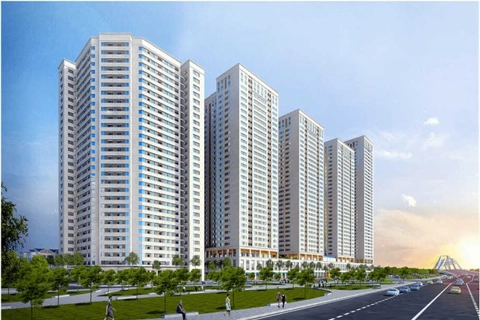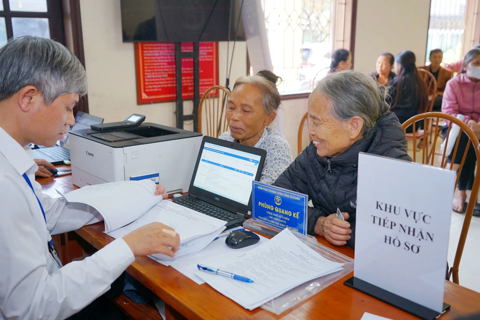Property
Three investment strategies in Vietnam industrial real estate sector
Aug 09, 2019 / 06:57 PM
The strategies are those helping investors to maximize their profits.
Vietnam’s industrial sector is drawing an increasing number of foreign investors who typically follow three market entry strategies.
This article explores how the investors put a focus on their portfolio to maximize their profits in the following ways analyzed by JLL – a professional services firm that specializes in real estate and investment management.
The first one is direct land acquisition from industrial park operators.
This has been the traditional way to acquire industrial assets in Vietnam as industrial park operators subleases the land to various tenants for remaining tenure, JLL said in a report, adding that the investors can also acquire directly from the government.
The second strategy is forming strategic joint ventures with reputable local partners who have access to land bank and can assist foreign investors in local permits/licenses obtaining process.
One of the best examples for this strategy is a joint venture in 1996 between two industrial developers, supported by governments from both countries, Sembcorp Development Companies from Singapore and Becamex IDC Corp from Vietnam.
The collaboration saw the establishment of Vietnam Singapore Industrial Park (VSIP), with a total of 9 projects across the country with a combined land fund of more than 8,600 hectares, providing manufacturing infrastructure for nearly 900 enterprises with a total investment of US$14 billion.
The launch of BW Industrial Development – a joint venture between global private equity fund Warburg Pincus and Becamex IDC Corp – in May 2018 is also one of the recent cases. With over 200ha of projects under development and initial investment of more than US$200 million, BW Industrial is the largest “for-rent” industrial and logistics developer in Vietnam, according to their announcement.
Within the same month, Sembcorp Infra Services (SIS), a subsidiary of Sembcorp Development, announced that CRE Asia agreed to invest US$6.2 million into SIS in exchange for 30% interest while Sembcorp Development will hold the remaining balance. The new capital from CRE Asia, together with bank borrowings, will fund the development of an additional 30,000 square meters of warehouse space in VSIP Haiphong.
The third market entry strategy for investors is either direct acquisition or sale and leaseback of operating industrial assets with stabilized income.
The sale and leaseback of Unilever warehouse in VSIP 1 in the southern province of Binh Duong in the last quarter of 2018 is one of the examples. According to their press release, Mapletree Logistics Trust entered into a conditional asset transfer agreement with Unilever International Company Limited to acquire the Grade A warehouse unit for VND725.1 billion (US$31.1 million). Upon completion of the acquisition, the property will be leased to Unilever Vietnam for 10 years with annual rent escalations.
Overview of Vietnam’s industrial sector
Over the past 20 years, Vietnam has appeared to be one of the brightest manufacturing hotspots in Southeast Asia.
JLL’s research showed that the area for industrial parks reached 80,000 hectares in 2018 from 335 ha in 1986.
JLL experts attributed the surge to Vietnam’s strong economic growth which was boosted by the country’s export-driven economy. In addition, numerous free trade agreements (FTAs) have relaxed tariffs and created a favorable business environment, attracting more investors to come. The experts also pointed out an advantage coming from a young, plentiful, relatively low-cost workforce.
Stephen Wyatt, country head of JLL Vietnam, said “Vietnam’s strong growth in industrial sector is not only because of the US-China trade war.” The Comprehensive and Progressive Agreement for Trans-Pacific Partnership (CPTPP) and the EU – Vietnam Free Trade Agreement (EVFTA) demonstrate Vietnam’s willingness for further international integration, creating new opportunities for investors, he added.
Challenges
Despite being one of the hottest industrial hubs in Southeast Asia, some challenges remain ahead, JLL will help address the issues.
“Strong demand coupled with US – China trade tensions drove the land price to a new level. In Q2/2019, the average land price for southern industrial market is approximately at US$95 per sqm per lease term, an increase of 15.8% on year. This could create a gap between the vendor’s and investor’s expectations,” commented Stephen.
Finding partners to form joint ventures, it could also be a challenge as not only the partner has access to strategically located land bank and feasible projects, but also strong expertise in the local market knowledge as well as having long-term commitment.
Therefore, before entering a deal, building trust is very important as investors rely on preliminary information with the commitments from vendors while vendors rely on the track record, financial and expertise capability from investors.
Given the lack of transparency in the market, the listing companies are more preferred from both sides because the company as well as financial and legal information is publicly transparent and accessible.
Insufficient supporting infrastructure, spending on infrastructure is relatively high when compared to other countries but many infrastructure projects in Vietnam face delays due to land compensation and funding.
Cost and time are also quite high and inefficient as compared to its regional peers. To attract more foreign investment and stay ahead of the curve, especially in the context of Industry 4.0, Vietnam would need to improve its infrastructure network and process of cross border trading. In addition, more skilled labor force and incentives for innovation in terms of communication and technology must be taken into consideration.
Above all, Vietnam’s industrial sector remains potential as high specifications, modern logistics warehouse space, and strong demand from regional occupiers are supporting the growth of this industry, JLL emphasized.
The rapid growth of the middle-income population creating more disposable income and a growing obsession of with e-commerce will put significant demand on logistics facilities. Quality of the assets, rental growth, deal size and remaining land tenure are the key crucial factors for investors to determine their investment decisions, it concluded.

Industrial real estate is one of segments in Vietnam drawing foreign investment.
|
The first one is direct land acquisition from industrial park operators.
This has been the traditional way to acquire industrial assets in Vietnam as industrial park operators subleases the land to various tenants for remaining tenure, JLL said in a report, adding that the investors can also acquire directly from the government.
The second strategy is forming strategic joint ventures with reputable local partners who have access to land bank and can assist foreign investors in local permits/licenses obtaining process.
One of the best examples for this strategy is a joint venture in 1996 between two industrial developers, supported by governments from both countries, Sembcorp Development Companies from Singapore and Becamex IDC Corp from Vietnam.
The collaboration saw the establishment of Vietnam Singapore Industrial Park (VSIP), with a total of 9 projects across the country with a combined land fund of more than 8,600 hectares, providing manufacturing infrastructure for nearly 900 enterprises with a total investment of US$14 billion.
The launch of BW Industrial Development – a joint venture between global private equity fund Warburg Pincus and Becamex IDC Corp – in May 2018 is also one of the recent cases. With over 200ha of projects under development and initial investment of more than US$200 million, BW Industrial is the largest “for-rent” industrial and logistics developer in Vietnam, according to their announcement.
Within the same month, Sembcorp Infra Services (SIS), a subsidiary of Sembcorp Development, announced that CRE Asia agreed to invest US$6.2 million into SIS in exchange for 30% interest while Sembcorp Development will hold the remaining balance. The new capital from CRE Asia, together with bank borrowings, will fund the development of an additional 30,000 square meters of warehouse space in VSIP Haiphong.
The third market entry strategy for investors is either direct acquisition or sale and leaseback of operating industrial assets with stabilized income.
The sale and leaseback of Unilever warehouse in VSIP 1 in the southern province of Binh Duong in the last quarter of 2018 is one of the examples. According to their press release, Mapletree Logistics Trust entered into a conditional asset transfer agreement with Unilever International Company Limited to acquire the Grade A warehouse unit for VND725.1 billion (US$31.1 million). Upon completion of the acquisition, the property will be leased to Unilever Vietnam for 10 years with annual rent escalations.

Stephen Wyatt, country head of JLL Vietnam
|
Over the past 20 years, Vietnam has appeared to be one of the brightest manufacturing hotspots in Southeast Asia.
JLL’s research showed that the area for industrial parks reached 80,000 hectares in 2018 from 335 ha in 1986.
JLL experts attributed the surge to Vietnam’s strong economic growth which was boosted by the country’s export-driven economy. In addition, numerous free trade agreements (FTAs) have relaxed tariffs and created a favorable business environment, attracting more investors to come. The experts also pointed out an advantage coming from a young, plentiful, relatively low-cost workforce.
Stephen Wyatt, country head of JLL Vietnam, said “Vietnam’s strong growth in industrial sector is not only because of the US-China trade war.” The Comprehensive and Progressive Agreement for Trans-Pacific Partnership (CPTPP) and the EU – Vietnam Free Trade Agreement (EVFTA) demonstrate Vietnam’s willingness for further international integration, creating new opportunities for investors, he added.
Challenges
Despite being one of the hottest industrial hubs in Southeast Asia, some challenges remain ahead, JLL will help address the issues.
“Strong demand coupled with US – China trade tensions drove the land price to a new level. In Q2/2019, the average land price for southern industrial market is approximately at US$95 per sqm per lease term, an increase of 15.8% on year. This could create a gap between the vendor’s and investor’s expectations,” commented Stephen.
Finding partners to form joint ventures, it could also be a challenge as not only the partner has access to strategically located land bank and feasible projects, but also strong expertise in the local market knowledge as well as having long-term commitment.
Therefore, before entering a deal, building trust is very important as investors rely on preliminary information with the commitments from vendors while vendors rely on the track record, financial and expertise capability from investors.
Given the lack of transparency in the market, the listing companies are more preferred from both sides because the company as well as financial and legal information is publicly transparent and accessible.
Insufficient supporting infrastructure, spending on infrastructure is relatively high when compared to other countries but many infrastructure projects in Vietnam face delays due to land compensation and funding.
Cost and time are also quite high and inefficient as compared to its regional peers. To attract more foreign investment and stay ahead of the curve, especially in the context of Industry 4.0, Vietnam would need to improve its infrastructure network and process of cross border trading. In addition, more skilled labor force and incentives for innovation in terms of communication and technology must be taken into consideration.
Above all, Vietnam’s industrial sector remains potential as high specifications, modern logistics warehouse space, and strong demand from regional occupiers are supporting the growth of this industry, JLL emphasized.
The rapid growth of the middle-income population creating more disposable income and a growing obsession of with e-commerce will put significant demand on logistics facilities. Quality of the assets, rental growth, deal size and remaining land tenure are the key crucial factors for investors to determine their investment decisions, it concluded.








